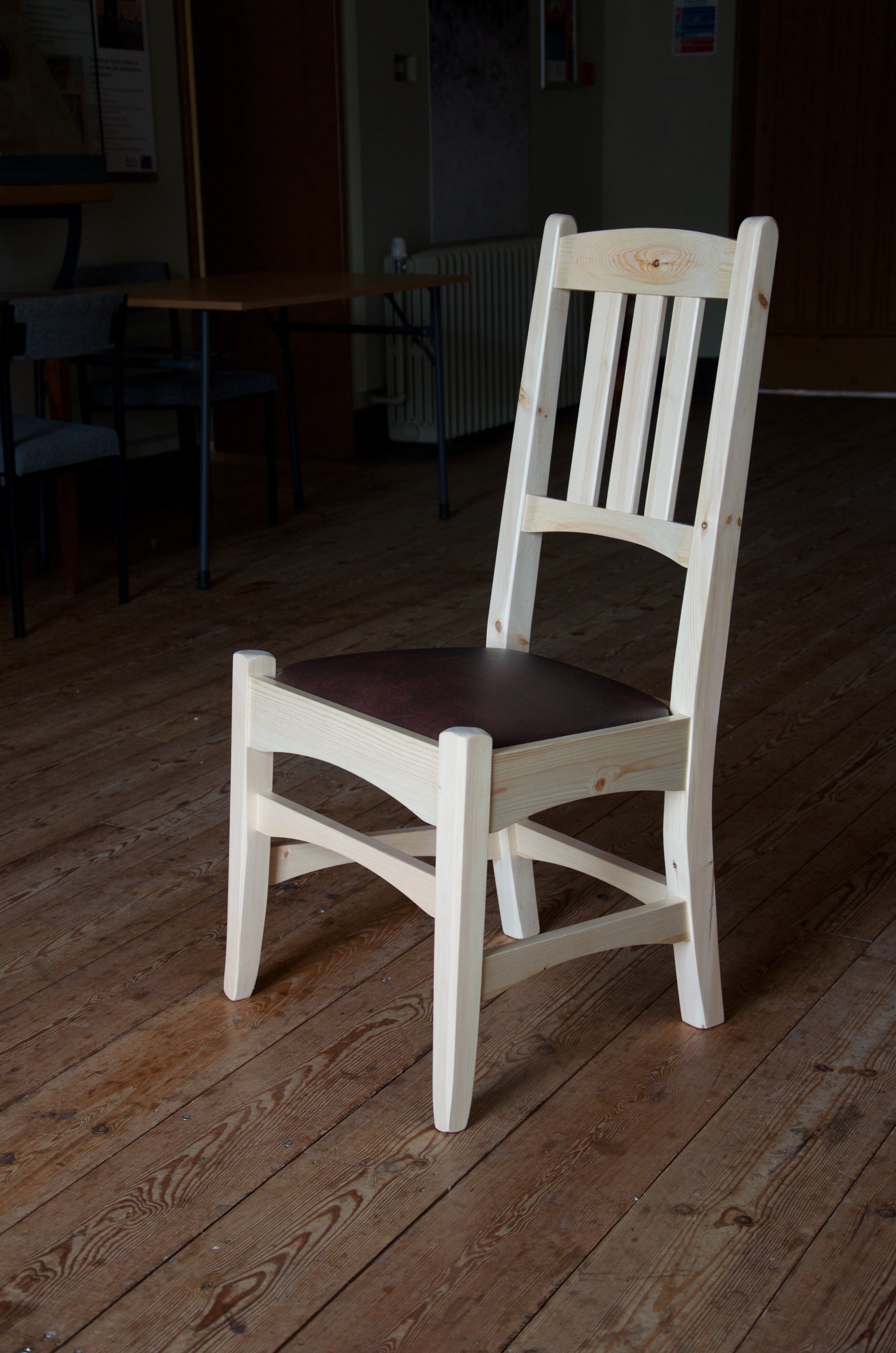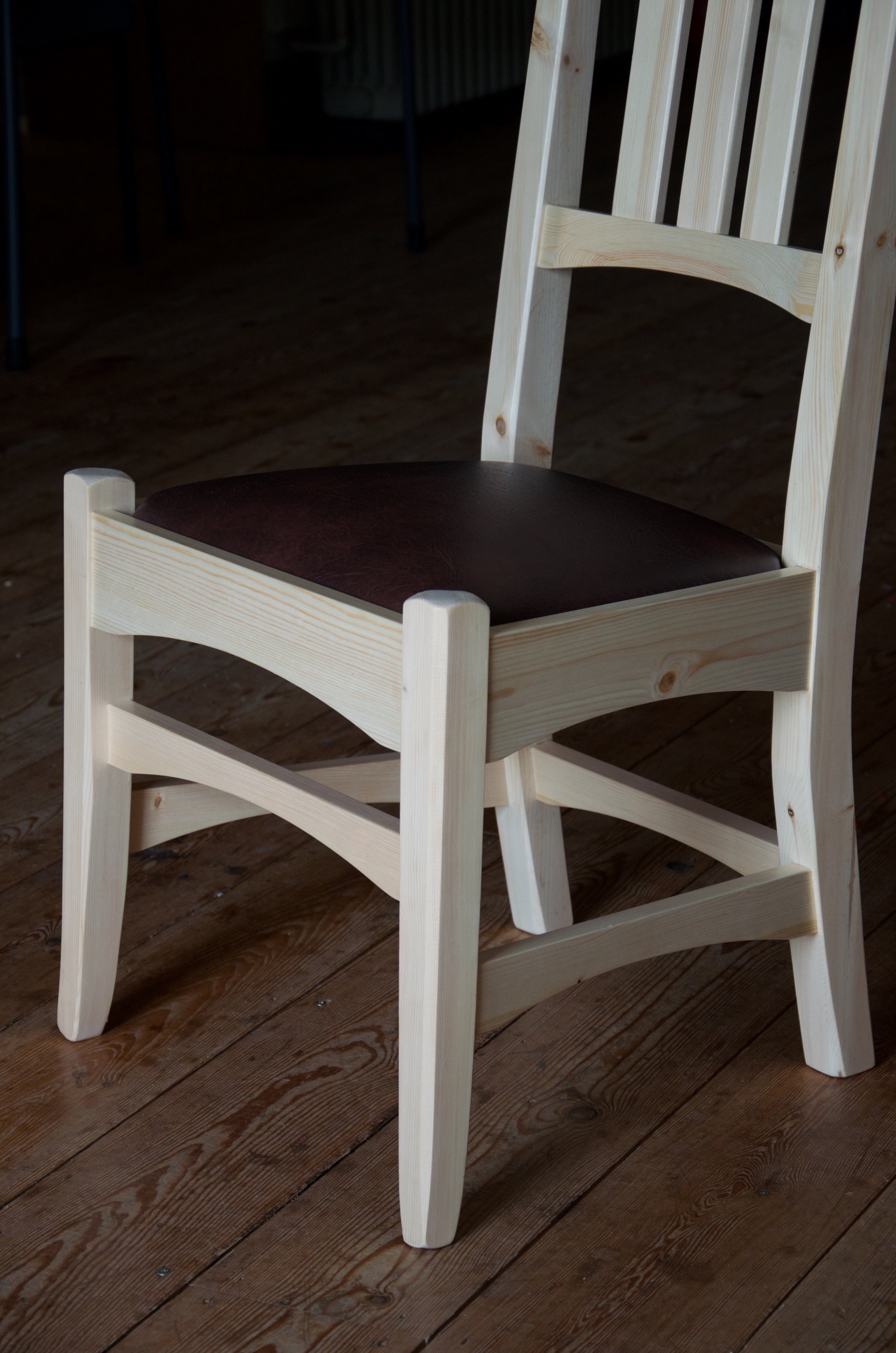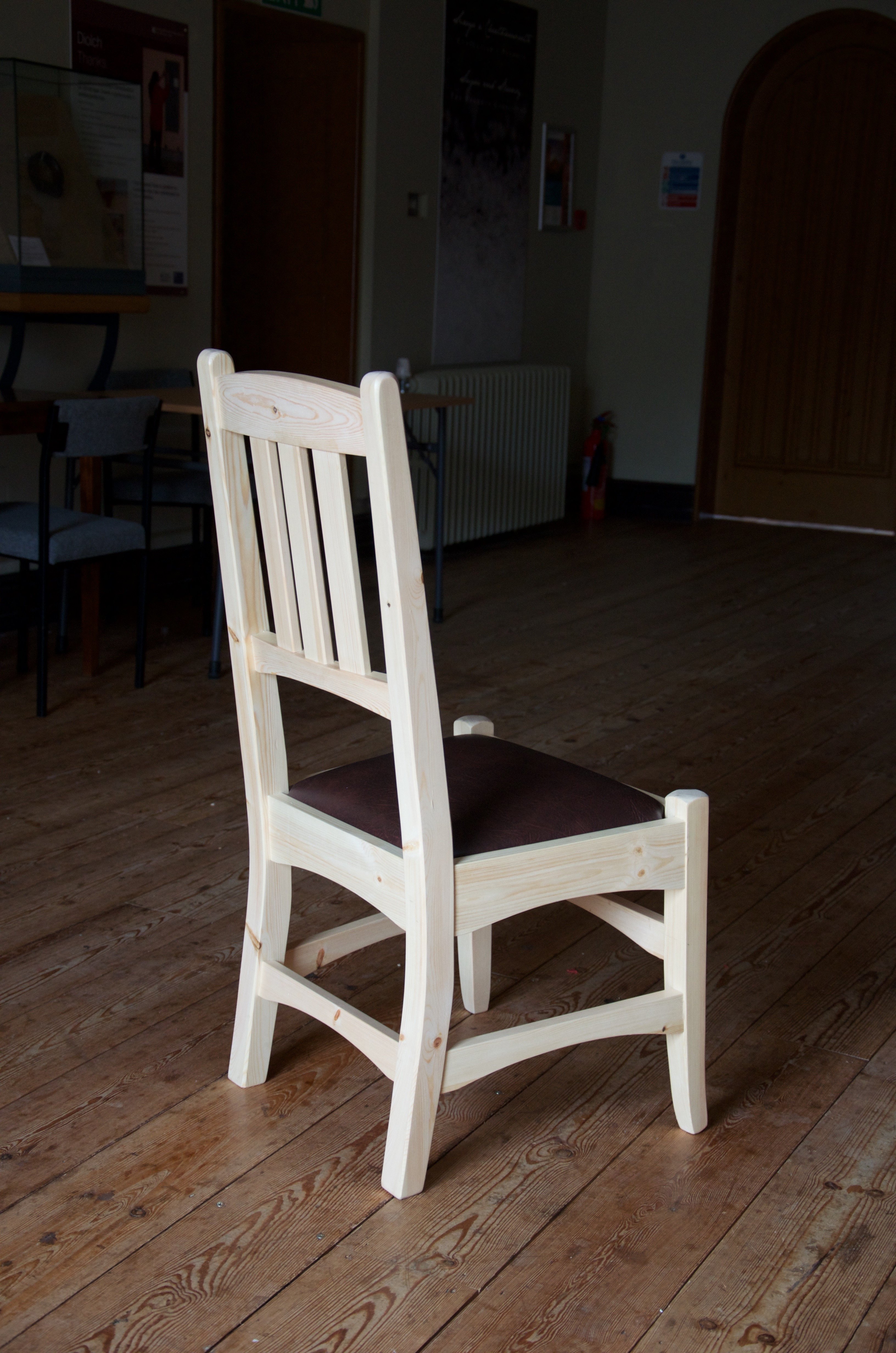The final phase of design

It’s a strong chair because of twin railing lower down. If a chair is going to fail it most fails at the knee if the lower rails are eliminated. Whereas I agree it will affect the appearance of the design, and it’s often done without thinking, the important element of making a good chair is that it doesn’t fail under the amazing stresses this furniture type alone is subjected to.
In a few weeks this chair will be made from European oak with leather upholstery. We’ll be making it to break down the intimidation woodworkers feel in tackling chair making and also to compliment the trestle table we made a few weeks ago.
Few woodworking projects give me more pleasure than making chairs. Silly, really, but it’s a small project to make with a big return. I’ll let you know when this project comes up.




Thanks very much. I never thought I would tackle making a chair, but with your help, I’m going to do it.
Steven
Are you also going to do the Rocking Chair? I see this one has some of the same design features.
No, no plans for that as yet I’m afraid.
“Two 2×4’s,…” The USA influence Paul? I guess two 4x2s would make do 🙂
I think for me they will always be 2×4’s now. When I first arrived stateside people were less tolerant thinking me a rookie woodworker because I did it the wrong way around (for the USA). It’s also pronounced differently too. ‘tuba fore.’ would be correct. Subtle but very real.
In the UK someone walks up to an assistant, sorry, I mean team member, and says, “Excuse me, er, do you think you could tell me where the four by two material is kept?” In the US it’s more said with less, for instance, “Tuba fours?” In the UK it continues, “Let me show you the timber department.” In the US it’s, “Ahl (aisle) wun (one).” These small things I sorely miss. Other things I miss are, “Just a tad under.” and “Just a drop less.” Neither of which of course are anywhere near a specific or known size and means you better go measure “fer” “yerself” if you don’t want to lose out “Just a tad, which is a lot more than a midge’s.”
Looks nice. Have you tried getting a few people to sit on it? I feel like the front legs coming up so high might get in the way?
Yes, and no one’s complained at all. It certainly hasn’t bothered me either so I think we’re safe.
That chair is lovely, Paul, and the fact that it is made from 2x4s just makes it all the more appealing to me. I would love to try to build one of those.
What’s pretty cool about this post that most people won’t notice is that Paul has used the correct glyph (character) for the 2-by-4 rather than just hitting the letter x. Example below:
2×4 correct
2×4 wrong
I know it’s a small thing but as a graphic designer I appreciate it!
Hmmm the auto correct on my phone changed the ‘x’ so my comment doesn’t make sense!
In “Make A Chair From A Tree” John Alexander uses interlocking mortise and tenon to keep the chair solid even when you rock back in it. He drops it a few inches at an angle so the chair kind of walks around a bit on all-fours until it settles back and it sounds very solid. Does your chair have interlocking mortise and tenons?
Nice looking chair. Like the rest of the folks I’m looking forward to it. Heck, I look forward to all your videos.
Given how the shape of the back legs looks, it is surprising that it is made from tuba-fores. Are they laminated or bent in way or cut from a larger piece?
Thanks
Nope, just cut straight from the 2×4’s. No lamination or bending necessary and the angles are perfect for chair back support and to provide a non-tipping chair too.
Glad to see there will soon be some chairs to go with the excellent table project. I was wondering about that. What about shaping the back pieces to mimic the curves of the table legs?
Haha! I know just what you mean. Yesterday I was in far east Texas picking up a large donation of eastern red cedar timbers – “forebasix” and “sixbasix.”
Hi Paul I am wondering what degree did you use for the back. Looks to be somewhere around 95. Just curious.
It’s 96.5 from the front-to-back rail. That’s my standard rake for dining chairs generally.